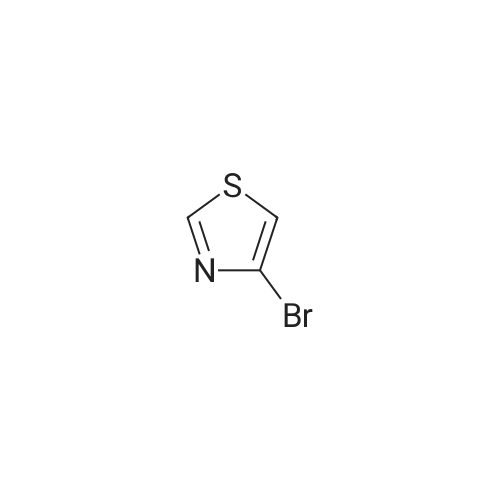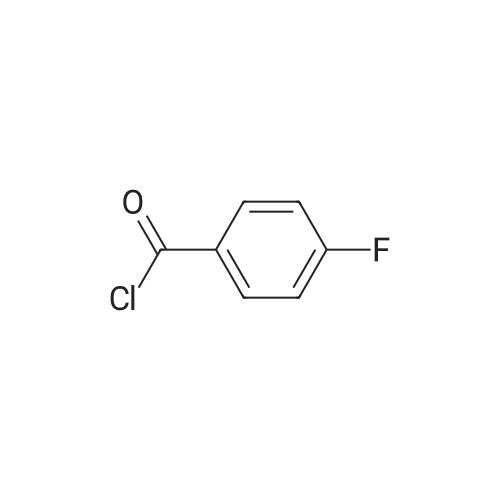Synthesis and biological evaluation of structurally diverse 6-aryl-3-aroyl-indole analogues as inhibitors of tubulin polymerization
Wen Ren
;
Yuling Deng
;
Jacob D. Ward
, et al.
Eur. J. Med. Chem.,2024,263,115794.
DOI:
10.1016/j.ejmech.2023.115794
More
Abstract: The synthesis and evaluation of small-molecule inhibitors of tubulin polymerization remains a promising approach for the development of new therapeutic agents for cancer treatment. The natural products colchicine and combretastatin A-4 (CA4) inspired significant drug discovery campaigns targeting the colchicine site located on the beta-subunit of the tubulin heterodimer, but so far these efforts have not yielded an approved drug for cancer treatment in human patients. Interest in the colchicine site was enhanced by the discovery that a subset of colchicine site agents demonstrated dual functionality as both potent antiproliferative agents and effective vascular disrupting agents (VDAs). Our previous studies led to the discovery and development of a 2-aryl-3-aroyl-indole analogue (OXi8006) that inhibited tubulin polymerization and demonstrated low nM IC50 values against a variety of human cancer cell lines. A water-soluble phosphate prodrug salt (OXi8007), synthesized from OXi8006, displayed promising vascular disrupting activity in mouse models of cancer. To further extend structure-activity relationship correlations, a series of 6-aryl-3-aroyl-indole analogues was synthesized and evaluated for their inhibition of tubulin polymerization and cytotoxicity against human cancer cell lines. Several structurally diverse molecules in this small library were strong inhibitors of tubulin polymerization and of MCF-7 and MDA-MB-231 human breast cancer cells. One of the most promising analogues (KGP591) caused significant G2/M arrest of MDA-MB-231 cells, disrupted microtubule structure and cell morphology in MDA-MB-231 cells, and demonstrated significant inhibition of MDA-MB-231 cell migration in a wound healing (scratch) assay. A phosphate prodrug salt, KGP618, synthesized from its parent phenolic precursor, KGP591, demonstrated significant reduction in bioluminescence signal when evaluated in vivo against an orthotopic model of kidney cancer (RENCA-luc) in BALB/c mice, indicative of VDA efficacy. The most active compounds from this series offer promise as anticancer therapeutic agents.
Keywords:
Inhibitors of tubulin polymerization ;
Vascular disrupting agents ;
Indole synthesis ;
Molecular docking ;
Antiproliferative agents ;
Inhibitors of cell migration
Purchased from AmBeed:
128796-39-4 ;
10365-98-7 ;
98-80-6 ;
98437-24-2 ;
5720-05-8 ;
64-86-8 ;
13331-27-6 ;
206551-43-1 ;
63139-21-9 ;
622864-48-6 ;
5720-07-0 ;
87199-18-6 ;
30418-59-8 ;
4521-61-3 ;
4521-61-3 ;
87199-18-6 ;
64-86-8 ;
64-86-8 ;
128796-39-4 ;
5720-05-8 ;
64-86-8
...More

Synthesis and Characterization of 5-(2-Fluoro-4-[11C]methoxyphenyl)-2,2-dimethyl-3,4-dihydro-2H-pyrano[2,3-b]pyridine-7-carboxamide as a PET Imaging Ligand for Metabotropic Glutamate Receptor 2
Yuan, Gengyang
;
Dhaynaut, Maeva
;
Lan, Yu
, et al.
J. Med. Chem.,2022,65(3):2593-2609.
DOI:
10.1021/acs.jmedchem.1c02004
PubMed ID:
35089713
More
Abstract: Metabotropic glutamate receptor 2 (mGluR2) is a therapeutic target for several neuropsychiatric disorders. An mGluR2 function in etiology could be unveiled by positron emission tomography (PET). In this regard, 5-(2-fluoro-4-[11C]methoxyphenyl)-2,2-dimethyl-3,4-dihydro-2H-pyrano[2,3-b]pyridine-7-carboxamide ([11C]13, [11C]mG2N001), a potent negative allosteric modulator (NAM), was developed to support this endeavor. [11C]13 was synthesized via the O-[11C]methylation of phenol 24 with a high molar activity of 212 ± 76 GBq/μmol (n = 5) and excellent radiochemical purity (>99%). PET imaging of [11C]13 in rats demonstrated its superior brain heterogeneity and reduced accumulation with pretreatment of mGluR2 NAMs, VU6001966 (9) and MNI-137 (26), the extent of which revealed a time-dependent drug effect of the blocking agents. In a nonhuman primate, [11C]13 selectively accumulated in mGluR2-rich regions and resulted in high-contrast brain images. Therefore, [11C]13 is a potential candidate for translational PET imaging of the mGluR2 function.
Purchased from AmBeed:
16289-54-6 ;
5521-55-1 ;
22047-25-2 ;
98-80-6 ;
40155-47-3 ;
5720-05-8 ;
879-65-2 ;
98-96-4 ;
31519-62-7 ;
23688-89-3 ;
23611-75-8 ;
33332-25-1 ;
20737-42-2 ;
61442-38-4 ;
17933-03-8 ;
50681-25-9 ;
13924-99-7 ;
40155-43-9 ;
166744-78-1 ;
36070-80-1 ;
4595-61-3 ;
118853-60-4 ;
41110-28-5 ;
40155-42-8 ;
937669-80-2 ;
31462-59-6 ;
16419-60-6 ;
5424-01-1 ;
59-67-6 ;
34604-60-9 ;
27398-39-6 ;
1196151-53-7 ;
19847-12-2 ;
13965-03-2 ;
876161-05-6 ;
27825-21-4 ;
2164-61-6 ;
4604-72-2 ;
98-97-5 ;
24005-61-6 ;
5521-61-9 ;
2516-34-9 ;
2719-27-9 ;
123-90-0 ;
6761-50-8 ;
625-43-4 ;
872-64-0 ;
1309866-36-1 ;
36932-49-7 ;
1528085-68-8 ;
1195533-51-7 ;
13534-79-7
...More
-2,2-dimethyl-3,4-dihydro-2H-pyrano[2,3-b]pyridine-7-carboxamide as a PET Imaging Ligand for Metabotropic Glutamate Recept.png)
Structure activity relationship of pyrazinoic acid analogs as potential antimycobacterial agents
Hegde, Pooja V.
;
Aragaw, Wassihun W.
;
Cole, Malcolm S.
, et al.
Bioorgan. Med. Chem.,2022,74,117046.
DOI:
10.1016/j.bmc.2022.117046
PubMed ID:
36228522
More
Abstract: Tuberculosis (TB) remains a leading cause of infectious disease-related mortality and morbidity. Pyrazinamide (PZA) is a critical component of the first-line TB treatment regimen because of its sterilizing activity against non-replicating Mycobacterium tuberculosis (Mtb), but its mechanism of action has remained enigmatic. PZA is a prodrug converted by pyrazinamidase encoded by pncA within Mtb to the active moiety, pyrazinoic acid (POA) and PZA resistance is caused by loss-of-function mutations to pyrazinamidase. We have recently shown that POA induces targeted protein degradation of the enzyme PanD, a crucial component of the CoA biosynthetic pathway essential in Mtb. Based on the newly identified mechanism of action of POA, along with the crystal structure of PanD bound to POA, we designed several POA analogs using structure for interpretation to improve potency and overcome PZA resistance. We prepared and tested ring and carboxylic acid bioisosteres as well as 3, 5, 6 substitutions on the ring to study the structure activity relationships of the POA scaffold. All the analogs were evaluated for their whole cell antimycobacterial activity, and a few representative mols. were evaluated for their binding affinity, towards PanD, through isothermal titration calorimetry. We report that analogs with ring and carboxylic acid bioisosteres did not significantly enhance the antimicrobial activity, whereas the alkylamino-group substitutions at the 3 and 5 position of POA were found to be up to 5 to 10-fold more potent than POA. Further development and mechanistic anal. of these analogs may lead to a next generation POA analog for treating TB.
Keywords:
Tuberculosis ;
Pyrazinoic acid ;
pyrazinamide
Purchased from AmBeed:
16289-54-6 ;
5521-55-1 ;
22047-25-2 ;
98-80-6 ;
40155-47-3 ;
5720-05-8 ;
879-65-2 ;
98-96-4 ;
31519-62-7 ;
23688-89-3 ;
23611-75-8 ;
33332-25-1 ;
20737-42-2 ;
61442-38-4 ;
17933-03-8 ;
50681-25-9 ;
13924-99-7 ;
40155-43-9 ;
36070-80-1 ;
4595-61-3 ;
118853-60-4 ;
41110-28-5 ;
40155-42-8 ;
937669-80-2 ;
98-98-6 ;
31462-59-6 ;
16419-60-6 ;
5424-01-1 ;
59-67-6 ;
34604-60-9 ;
27398-39-6 ;
1196151-53-7 ;
19847-12-2 ;
13965-03-2 ;
876161-05-6 ;
27825-21-4 ;
2164-61-6 ;
4604-72-2 ;
98-97-5 ;
24005-61-6 ;
103-67-3 ;
5521-61-9 ;
2516-34-9 ;
2719-27-9 ;
123-90-0 ;
6761-50-8 ;
625-43-4 ;
872-64-0 ;
36932-49-7 ;
1528085-68-8 ;
1195533-51-7 ;
13534-79-7
...More


 Chemistry
Chemistry
 Pharmaceutical Intermediates
Pharmaceutical Intermediates
 Inhibitors/Agonists
Inhibitors/Agonists
 Material Science
Material Science















 For Research Only
For Research Only
 120K+ Compounds
120K+ Compounds
 Competitive Price
Competitive Price
 1-2 Day Shipping
1-2 Day Shipping



-2,2-dimethyl-3,4-dihydro-2H-pyrano[2,3-b]pyridine-7-carboxamide as a PET Imaging Ligand for Metabotropic Glutamate Recept.png)
























